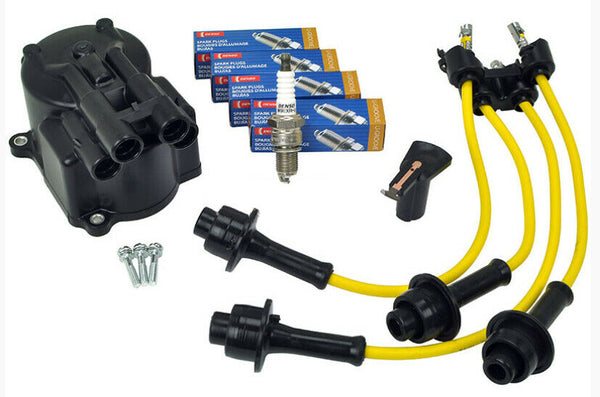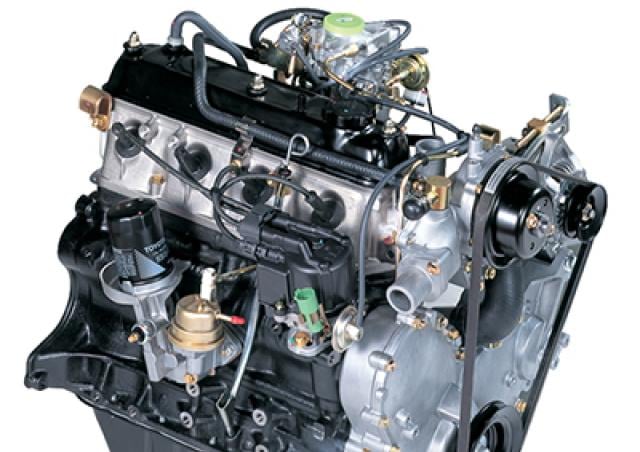The History and Evolution of the 4Y Engine in Automotive Engineering
The History and Evolution of the 4Y Engine in Automotive Engineering
Blog Article
Discovering the Various Sorts Of Engine: Which One Fits Your Needs?
In the mission to figure out the most ideal engine type for your details demands, it is vital to review the unique characteristics and advantages of each choice readily available. Internal burning engines remain to control as a result of their dependability, while electric engines are getting grip for their sustainability. Crossbreed engines provide a functional compromise, and diesel motor attract attention for their power popular applications. Additionally, alternate gas engines existing innovative services, albeit with particular restrictions. Understanding your concerns will contribute in this decision-making procedure, resulting in an exploration of variables that may influence your option.

Interior Burning Engines
Internal burning engines (ICEs) are the foundation of contemporary transportation, powering a large selection of vehicles from cars and trucks to aircrafts. These engines operate on the concept of transforming fuel right into power via a collection of regulated explosions within a combustion chamber. The most usual kinds of ICEs consist of gas engines, diesel motor, and rotating engines, each created to satisfy details performance and efficiency demands.
Gasoline engines usually use trigger ignition, while diesel engines depend on compression ignition, causing distinct distinctions in fuel performance and power output (4y engine). Rotating engines, or Wankel engines, provide a compact layout and smooth procedure, yet are much less frequently utilized in mainstream applications
ICEs have actually undergone substantial advancements in technology, consisting of the intro of turbocharging and fuel shot systems, which enhance overall efficiency and performance. In spite of their performance enhancements, ICEs encounter increasing examination as a result of their ecological effect, especially relating to greenhouse gas discharges. As the vehicle industry develops, the future of ICEs continues to be a subject of dispute, balancing performance, efficiency, and environmental factors to consider. They continue to play a vital duty in international transport infrastructure.
Electric Engines
As problems about environmental sustainability and nonrenewable fuel source reliance grow, electrical engines have become a compelling option to internal combustion engines. These engines use electrical motors powered by batteries or fuel cells, supplying a cleaner and a lot more effective motive powers.
Among the key advantages of electrical engines is their minimized exhausts. Unlike standard engines that melt nonrenewable fuel sources, electric engines generate absolutely no tailpipe emissions, significantly reducing air pollution and adding to improved public health. Additionally, the performance of electric motors commonly exceeds that of internal combustion engines, converting a greater proportion of energy from the source of power right into useful power for movement.
Electric engines are also remarkable for their silent operation, making them optimal for metropolitan settings. 4y engine. The simpleness of their layout results in less moving parts, which can bring about reduced maintenance prices and increased integrity over time
Nevertheless, challenges continue to be, consisting of battery manufacturing effects, charging facilities, and array restrictions. Regardless of these difficulties, the expanding financial investment in electric lorry innovation and renewable energy resources factors towards an encouraging future for electrical engines, positioned to play a crucial function in the shift towards lasting transportation.
Crossbreed Engines
Mixing the advantages of both typical and electrical interior burning engines, hybrid engines represent a functional remedy in the mission for efficient and lasting transport. These engines combine a gasoline or diesel motor with an electrical motor, enabling improved gas performance and reduced discharges compared to standard vehicles.
Crossbreed engines run in numerous modes, making use of the electrical motor for low-speed driving and the interior combustion engine for greater rates or when more power is required. This dynamic operation not only enhances gas economy but additionally contributes to a smoother driving experience. Regenerative braking is an additional important attribute, capturing energy normally lost throughout stopping and rerouting it to charge the battery.

As consumers significantly prioritize eco-friendliness, hybrid engines stand out as a useful choice, using an effective equilibrium of performance, performance, and environmental duty. This adaptability makes them ideal for metropolitan travelling and long-distance traveling alike.
Diesel Engines
Efficiency and power are trademarks of diesel motor, which have long been favored for their toughness and gas economic situation. These engines operate the concept of compression ignition, where air is compressed to a high temperature level before gas is injected, igniting it without the requirement for stimulate plugs. This process allows diesel motor to achieve higher thermal efficiency compared to gas engines, equating right into much better gas gas mileage and reduced carbon dioxide exhausts.
Diesel motor are especially well-suited for durable applications such as trucks, buses, and industrial equipment, where torque and durability are vital. Their design normally includes more powerful parts to endure the higher stress generated throughout procedure, resulting in longer solution life and minimized upkeep prices.

Alternate Fuel Engines
While diesel motor have long dominated the landscape of sturdy power resources, alternate fuel engines are gaining traction as sensible alternatives for a more lasting future. These engines utilize a range of fuels, such as compressed gas (CNG), ethanol, gas, and hydrogen, aiming to minimize greenhouse gas exhausts and reliance on fossil fuels.
One significant advantage of alternate gas engines is their potential to lower carbon impacts. link CNG engines produce less toxins contrasted to standard diesel engines, making them ideal for metropolitan transportation systems and fleets looking for to enhance air high quality. Ethanol, obtained from biomass, not only reduces exhausts but likewise supports agricultural economic climates.
Hydrogen fuel cells represent a cutting-edge growth in this world, supplying zero-emission power with a chemical reaction in between hydrogen and oxygen. Obstacles such as facilities advancement and manufacturing prices stay barriers to prevalent adoption.
Conclusion
Finally, choosing the appropriate engine kind necessitates cautious factor to consider of specific requirements and preferences. Interior combustion engines provide integrity, while electrical engines focus on sustainability and lowered upkeep. Hybrid engines combine the benefits of both, enhancing efficiency, whereas diesel engines supply superior power and torque for sturdy applications. Alternate fuel engines present eco-friendly options, albeit with possible framework challenges. Ultimately, an extensive linked here assessment of driving behaviors and ecological values will certainly help with an informed choice regarding engine choice.
Crossbreed engines provide a versatile concession, and diesel engines stand out for their power in demanding applications. The most usual types of ICEs consist of gasoline engines, diesel engines, and rotary engines, each designed to meet specific efficiency and performance requirements.
Unlike standard engines that burn fossil gas, electric engines generate zero tailpipe emissions, dramatically decreasing air contamination and contributing to boosted public health.Crossbreed engines operate in a number of modes, utilizing the electric motor for low-speed driving and the interior combustion engine for higher rates or when more power is needed. Hybrid engines incorporate the benefits of both, improving efficiency, whereas diesel engines offer superior power and torque for durable applications.
Report this page